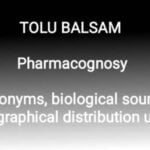Cinchona Bark Antimalarial Drug – Cinchona tree cognosy 1 hello friends, welcome to our website here we are going to discuss about cinchona Bark as a antimalarial drug along with its Synonyms, biological source, history, Geographical source, Cultivation and collection, Organoleptic Characters, microscopic characters, chemical constituents, chemical test, uses and substitutes of cinchona.
Cinchona

Cinchona tree
These are the drugs which are used in prophylaxis or treatment of malaria. The disease called malaria occurs due to infection by four species I will consider you know the species.
Cinchona bark
Synonyms are jesuits bark, Peruvian bark.
Are tthe Synonyms of cinchona Bark in different regions.
Follow us on link
Cinchona biological source
The dried bark of cultivated trees of cinchona calisaya, cinchona ledgeriana, cinchona officialis, Cinchona succirubra Pav. etc. Or hybrid of either of the last two species with either of the first two family Rubiacea. It contains not less than 6 percent of total alkaloids of cinchona.
History
The term cinchona is said to be derived from Countess of Chichon, wife of viceroy of Peru who was believed to be cured in 1638 from fever by the use of this bark.
Geographical source
The countries producing the drug on commercial scale are Tanzania, Bolivia, Columbia, Ecuador, Guatemala, Indonesia, Zaire, Kenya, Sri Lanka and India.
At ppresent most of the world requirement is met by Zaire and Indonesia. Five thousand tonnes of cinchona Bark is processes annually to produce alkaloids all over the world.
In iIndia cinchona is cultivated in cultivated in Annamali Hills in Tamil Nadu. It is also cultivated in Darjeeling District of west bengal. The government factories extracting Cinchona alkaloids are situated at Mungpoo and Annamallis in Tamil Nadu.
Cultivation and collection
Most oof the cinchona species thrive best in tropical climate at an altitude of 1000 to 3000 metres. The soil, temperature, Rainfall and other requirements of cinchona plant are :
- Altitude : 1000 to 3000 metres above sea level. It grows satisfactorily below 1000 metres but it has been found to contain low quinine.
- Temperature : the optimum temperature for the favourable growth of cinchona is 60 ° to 75° F.
- Rainfall : in between 250 to 380 cm distribute in the year.
- Soil : light well drained forest soil rich in organic matter is found to be suitable for cultivation.
Organoleptic Characters
- Colour : stem bark outer surface is dull brownish grey to white the inner surface is yellowish brown to reddish brown.
- Odour : it has slight and characteristics odour.
- Taste : intensely bitter and somewhat astringent
Microscopic characters
- Cinchona exhibits typical histological characters of bark. The Cork cells are thin walled followed by phelloderm.
- The cCortex consists of several secretary channels and phloem fibres. Medullary rays with radially arranged cells are present.
- Idioblast oof calcium oxalate is the specific characteristics of cinchona Bark.
- Starch grains are present in the parenchyma tissue.
- Stone cells are rarely present in structure. A few of the Cork cells are lignified. Medullary Ray are 2 to 3 cells wide.
Cinchona alkaloids
Chemical constituents of cinchona are as
- cinchona contains about 25 alkaloids and total content varies 5 to 10 percent in the drug. The alkaloidal content of the drug varies in stem bark.
- Stem bark contain less amount of quinine, while root bark contains more.
- The leaves seeds and other parts of the plant are also found to contain the alkaloids.
- The aalkaloids exist as the salts of quinic and cinchotannic acids and the relative concentration varies from species to the species.
- Quinine and Quinidine are Isomers and contain methoxy group and produce fluroscence with oxygenated acids in ultraviolet light.
Chemical tests
- Heat tthe powdered bark in dry test tube with little glacial acetic acid. It yeilds purple vapour. If treated with dilute sulphuric acid it gives blue fluorescence.
- To tthe powdered drug add bromine water and ammonia and heat. Emerald green color due to formation of thaleoquin is produced.
Cinchona uses
cinchona Bark is used as a antimalarial drug and antipyretic. It is also bitter tonic and stomachic. Cinchonidine has weak action than quinine but is used in rheumatism and neuralgia. Quinidine is a employed as cardiac Depressant.
Black Catechu Astringent 1 – Difference Between Black Catechu and Pale Catechu link
Conclusion
This was all about pharmacognosy of cinchona Bark I hope you like this article please tell us in comment section and don’t worry about study.










